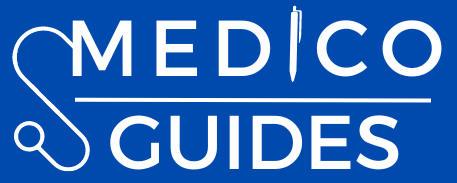Prepared by:
Alisha Athar (G13)
Compiled by:
Hafiz Muhammad Umair Noor (G12)
Recommended Book:
- Guyton and Hall Textbook of Medical Physiology 14th Edition (Chapter numbers are mentioned according to this edition)
THE BODY FLUIDS AND KIDNEYS
Chapter 25:
- Body fluid compartments
- ECF comaprtment
- Iso,hyper,hypo osmotic fluids
- Hypo and hypernatremia
- Table 25.4
- Fig 25.7
- Edema (intracellular and extracellular edema)
- Summary of safety factor that prevents edema
Chapter 26:
- Functions of kidney
- Physiological anatomy of kidney
- Blood supply of kidney
- Difference between cortical and juxta medullary neprhons
- Micturition
- Innervation of bladder(v.imp)
- Vesicoureteral reflux
- Ureterorenal reflex
- Cystometrogram with fig 26.8
- Micturition reflex (vvvv imp)
- Facilitation and inhibition of micturition
- Abnormalities of micturition (vvvvvvv imp)
- Urinary excretion rate equation
- Why large amount of solutes are filtered and reabsorbed by kidney
Chapter 27:
- Glomerular filtration rate
- Composition of glomerular filtrate (read)
- Filtration fraction (definition and equation)
- Glomerular capillary membrane
- Why albumin restricted from filtration (imp)
- Minimal change nephropathy ( proff seq)
- Determinants of GFR ( proff seq)
- Fig 27.4
- Increase glomerular capillary~ filtration coefficient
- Increase GFR with increase hydrostatic pressure
- Fig 27.7
- Table 27.2
- Renal blood flow(read)
- Table 27.4
- Control Of Glomerular filteration and blood flow(compl)
- Autotegulation of GFR(compl)
- Tubuloglomerular feedback
- Fig 27.11(SEQ)
- Fig 27.10
- Blockade of angiotensin formation .. (blue box pg 340)
- Myogenic autoregulation
- Fig 27.12
- Table 27.5
Chapter 28:
- Urinary excretion and filtration formula
- Transcellular pathway and para cellular pathway (active transport on 2nd page of this chapter)
- Fig 28.2 with net resorption of sodium ions paragraph (3 steps)
- SGLT (2nd last paragraph of page 345) (mcqs)
- Fig 28.3
- Transport maximum,tubular load and threshold
- Transport max of glucose value
- Diff btw transport maximum and renal threshold of glucose ( google)
- Fig. 28.4 (seq)
- Fig 28.5 28.6 28.8 28.9 28.10 28.11
- Fig 28.12, 28.13
- Glomerulotubular balance
- Table 28.2 (read)
- Table 28.3 (2023 proff SEQ)
- Fig 28.18 28.19
- Use of clearance method whole topic (vvvvimp)
- Table 28.4
Chapter 29:
- Osmolarity low and high
- Renal mechanism for dilute urine
- Fig 29.1
- Fig 29.2
- Obligatory urine volume
- Facultative resorption ( the resorption of water that take place in late distal tubule and cortical tubule under the influence of ADH)
- Sea water cause dehydration
- Excreting conc.urine requirements
- Countercurrent mechanism complete + steps involved (vvvv imp with fig 29.4)
- Fig 29.5
- Urea contributes to hyperosmosis (imp)
- Fig 29.6
- Countercurrent exchanger by vasa recta
- Fig 29.7
- Free water and osmolar clearance
- Disorders of urinary conc abilities all (vvvvvvv imp) diabetes insipidus
- Fig 29.9 (seq)
- Table 29.2
- Table 29.3
- Disorders of thirst and water intake (blue box)
- Role of angiotensin and aldosterone in controlling ecf osmolarity
Chapter 30:
- Table 30.1
- Fig 30.2
- Fig 30.7
- Fig 30.10
- Control of calcium excretion (fig 30.11)
- Table 30.2
- Table 30.3
- Table 30.4
- Pg 393-399 (read flowcharts from medical gateway)
- Page 398 (renal escape in 2nd blue box)
- Conditions causing increase in ECF( pg 400)
Chapter 31:
- Acid base regulation ( don’t need to do it again… biochemistry wla hi yahan revise kr lein)
- Isohydric principal in blue box (pg 408)
- How Kidneys regulate ecf H+ concentration? (3 points on pg 410)
- Secretion of H+ and absorption of HCO3
- Fig 31.5
- Table 31.2
- Clinical causes of acid base disorders (last blue box) read it thoroughly and shortlist it
- Treatment of acidosis and alkalosis
- Anion gap(vvvvimp) complete
Chapter 32:
- Table 32.1 (vvvvimp)
- Kidney disease (acute and chronic)
- Acute kidney injury with table 32.2
- Glomerulonephritis
- Chronic kidney disease with Table 32.4
- Fig 32.2
- Glomerulonephritis by chronic kidney disease
- Injury to renal interstitium
- Nephrotic syndrome
- Effects of renal failure (Uremia)
- Fanconi syndrome, barter syndrome, gitelman syndrome, liddle syndrome (page 433)

